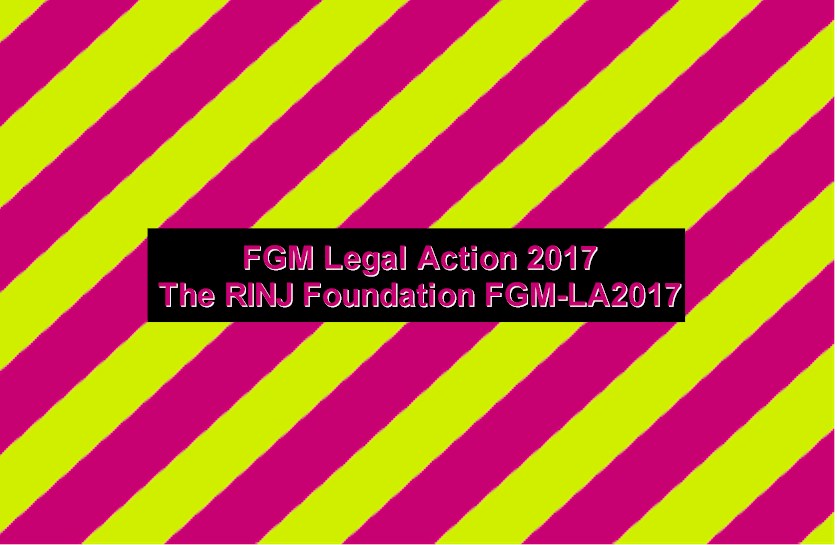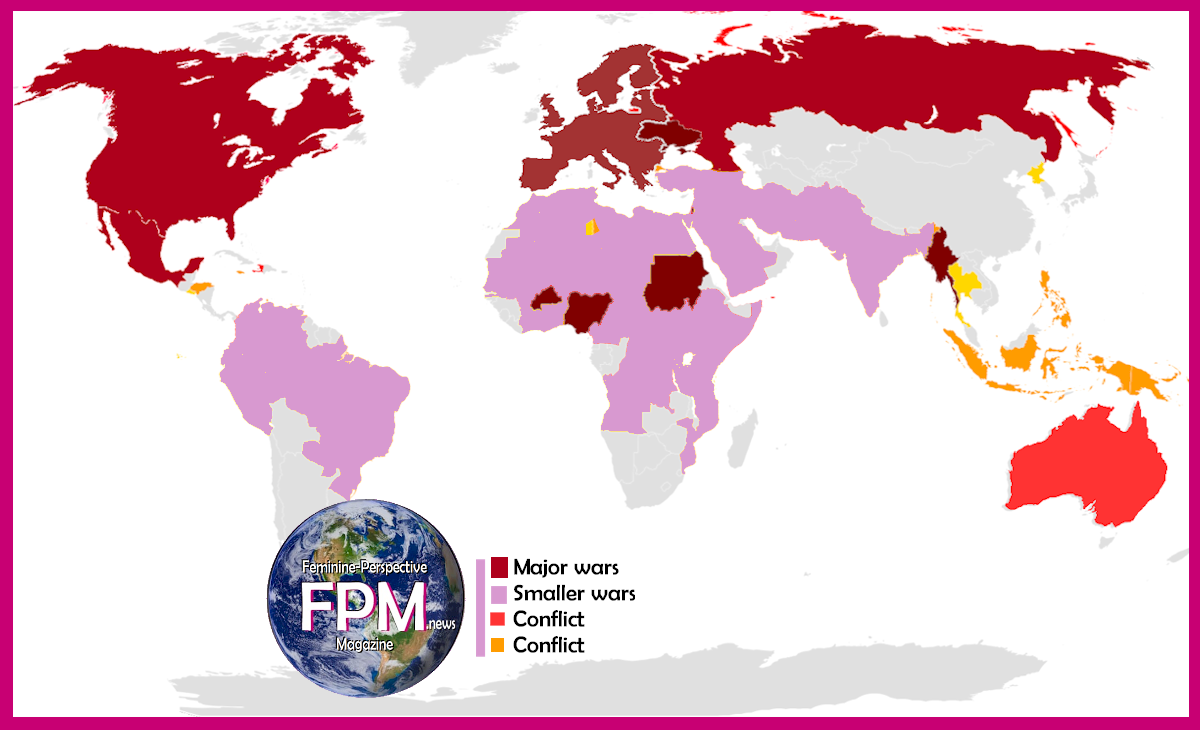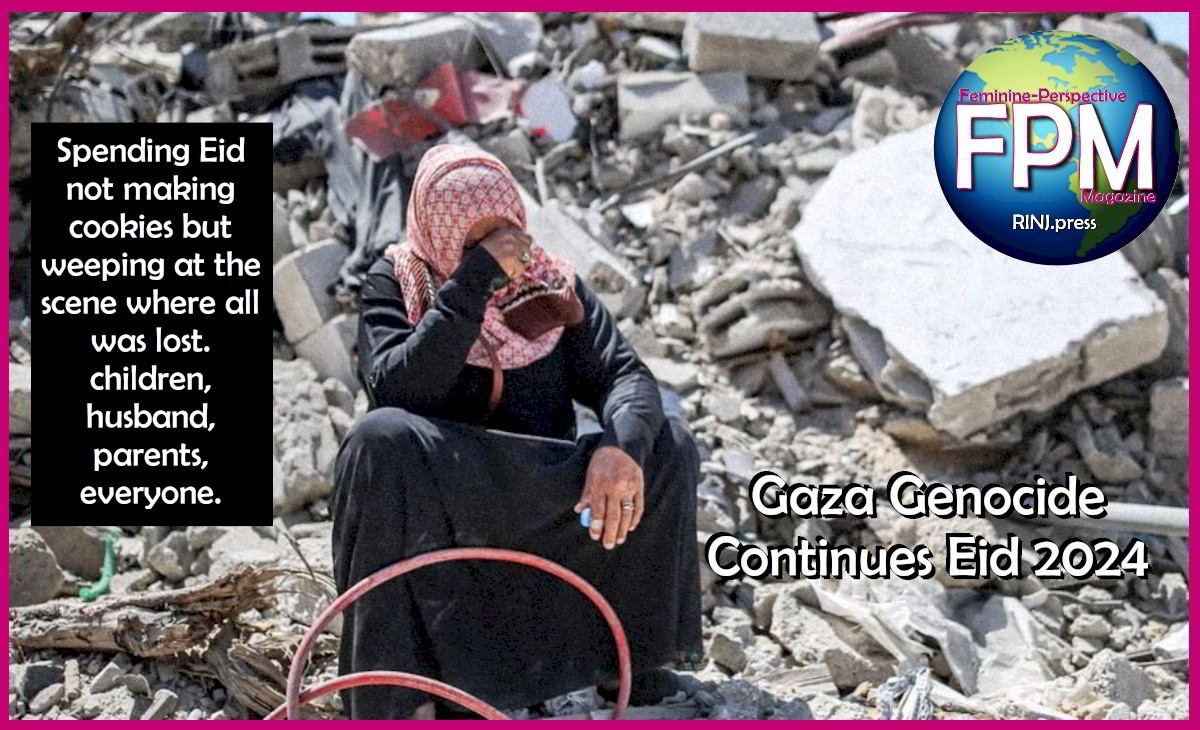Stop Mutilating Women!
Unless you want the inconvenience of criminal charges, law suits and prison, do not perform Female Genital Mutilation (FGM) on any person.
In the past two years The RINJ Foundation has been building a legal team to take on this problem.
FGM-LA2017
In 2017 The RINJ Foundation’s legal team will file criminal and civil actions against perpetrators of this sexual assault crime and seek the harshest possible punishment stopping at nothing. Where FGM has resulted in death at any time in your victim’s life, all the perpetrators will be charged with murder.
In August 2014, The RINJ Foundation adduced that FGM is a violent sexual assault crime.
In December 2012, the UN General Assembly adopted a resolution on the elimination of female genital mutilation.
In 2010 WHO published a “Global strategy to stop health care providers from performing female genital mutilation” in collaboration with other key UN agencies and international organizations.
In 2008 WHO together with 9 other United Nations partners, issued a new statement on the elimination of FGM to support increased advocacy for the abandonment of FGM. The 2008 statement provides evidence collected over the past decade about the practice. It highlights the increased recognition of the human rights and legal dimensions of the problem and provides data on the frequency and scope of FGM. It also summarizes research about on why FGM continues, how to stop it, and its damaging effects on the health of women, girls and newborn babies.
There have been enough warnings. People around the world have been told to stop this barbaric crime of sexual assault and to start treating women and men as equals. You don’t chop off the tip of a man’s penis and shouldn’t. Don’t do this to women or you could go to prison for the rest of your life.
Female genital mutilation (FGM) is a surgery that intentionally alters the female genital organs for non-medical reasons including deliberate total or partial removal of the female genitalia (explained further).
Female Genital Mutilation is a violent sexual assault. If it is done to a child, add child abuse, child-molestation and any number of other offences that may evolve and added to the list in accordance to the jurisdiction’s statutes.
In fighting for the safety of women and children members of The RINJ Foundation have been shot at, mocked, jailed, intimidated, abused and yet never gave up. Why?
FGM removes the dignity of a woman. The ensuing harm can include:
- chronic vaginal and pelvic infections,
- abnormal periods,
- difficulty passing urine, and persistent urine infections,
- kidney impairment and possible kidney failure,
- damage to the reproductive system, including infertility,
- cysts and the formation of scar tissue,
- complications in pregnancy and newborn deaths,
- pain during sex and lack of pleasurable sensation,
- psychological damage, including low libido, depression and anxiety,
- flashbacks during pregnancy and childbirth,
- the need for later surgery to open the lower vagina for sexual intercourse and childbirth, and more. Read more
RINJ has divided Female Genital Mutilation into five types:
- Type I: clitoridectomy (circumcision) consisting in removal of the prepuce with or without excision of part or the entire clitoris.
- Type II: excision, < consisting in > removal of the prepuce and the clitoris along with partial or total excision of the labia minora.
- Type III: infibulations, the form of FGM common in the countries of the Horn of Africa, consisting of the partial or total removal of the external genitalia. The two sides of the vulva are then sewn with a suture or thorns, reducing the size of the vulva opening and leaving only a small hole for the passage of urine and menses.
- Type IV: includes various practices of manipulation of the female genital organs – piercing or incision of the clitoris and/or labia; cauterization by burning of the clitoris and surrounding tissue; scraping of the vaginal opening (angurya) or cutting of the vagina (gishiri); introduction of corrosive substances in the vagina to cause bleeding or introduction of herbs with the aims of narrowing the vagina.
- Type V: Pioneered in the United States by an extremest religious group this is a neurological surgery procedure done between the ages sof 2 and 6 or even later that removes nerves to the clitoris. The procedure requires only a two cm or less incision (as observed under gynecological examination in early teens). Because this area of the body heals quickly the procedure is hard to detect but its symptoms are profound.
In this artistic video, “to fly” is to feel ‘down there’ again. We illustrate the feeling of inadequacy and specify the urge to become whole and to again “fly”.














